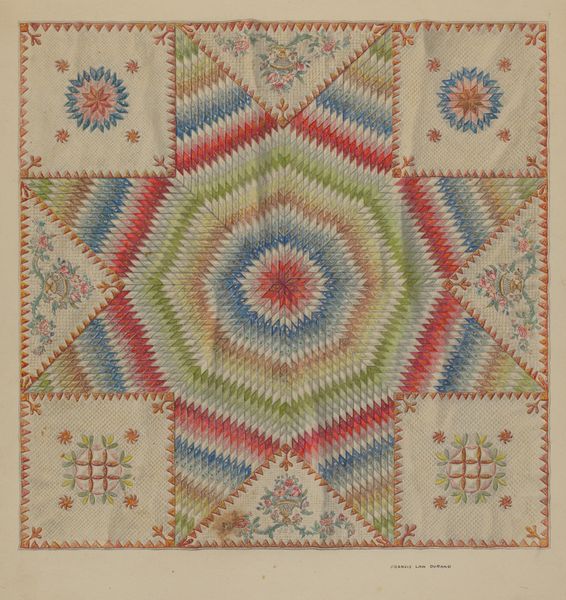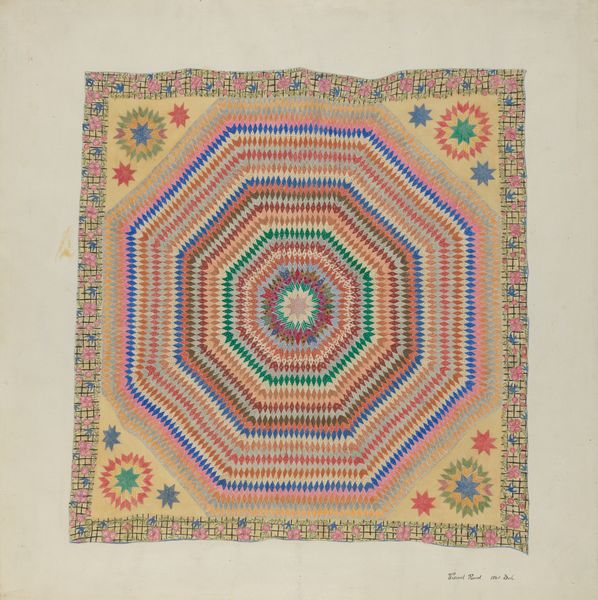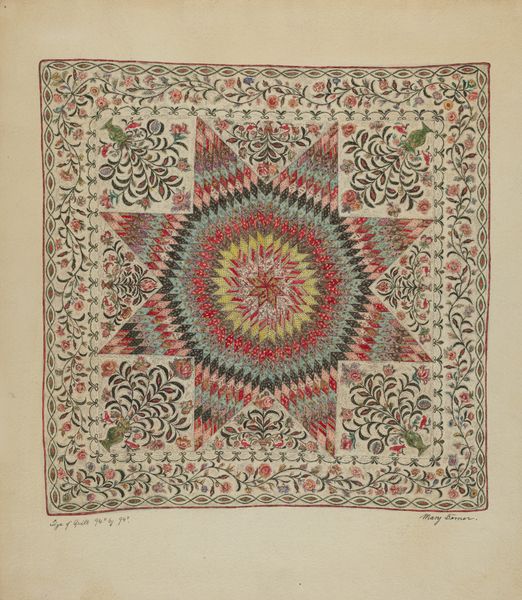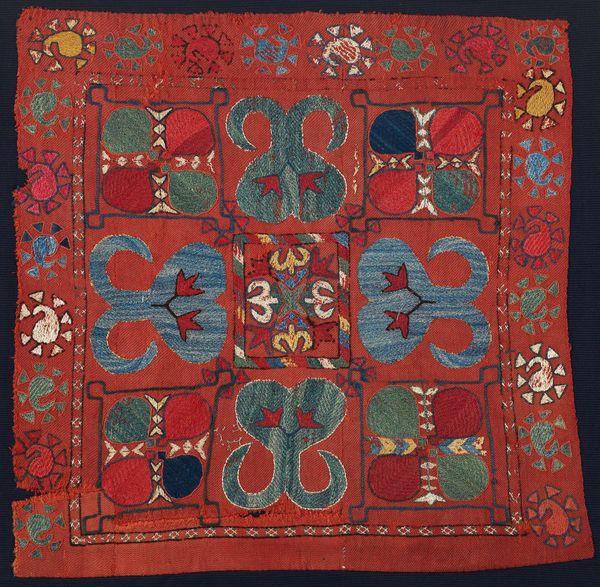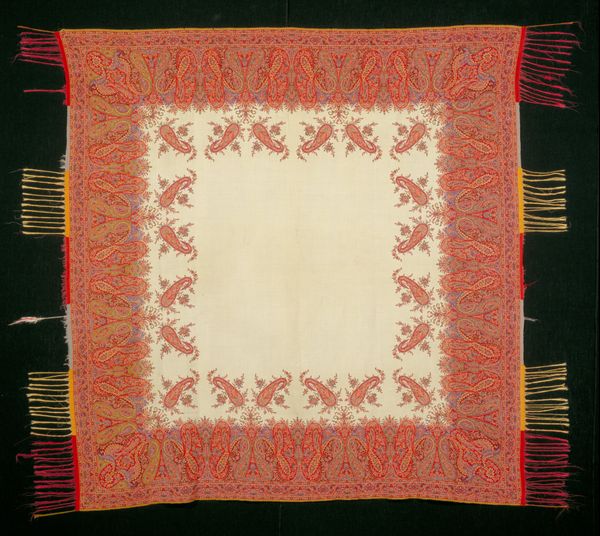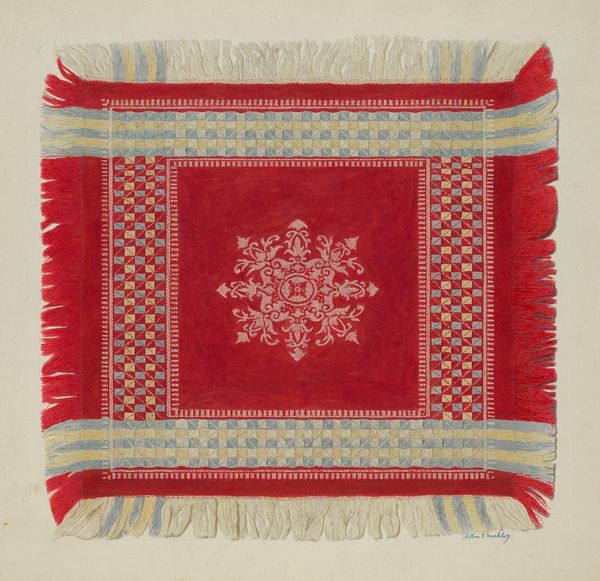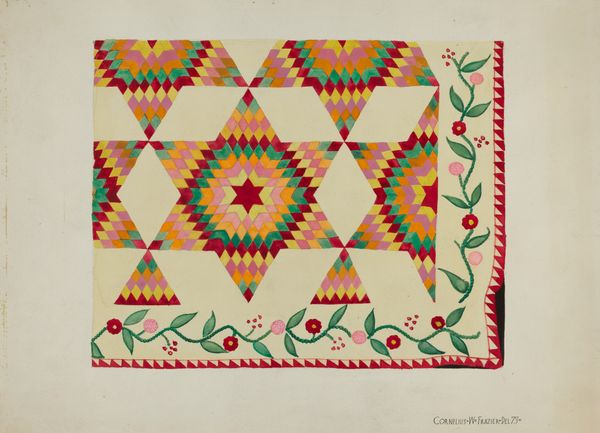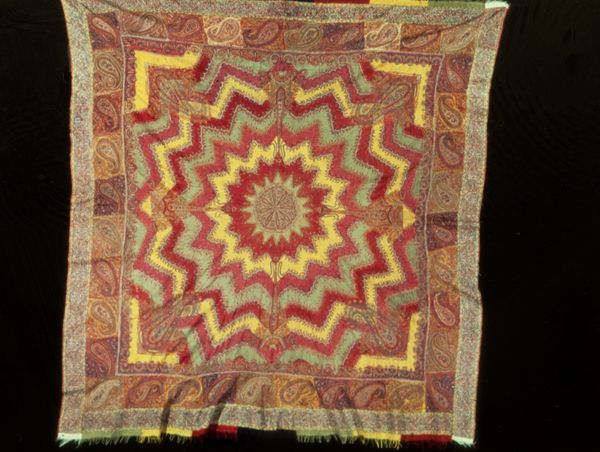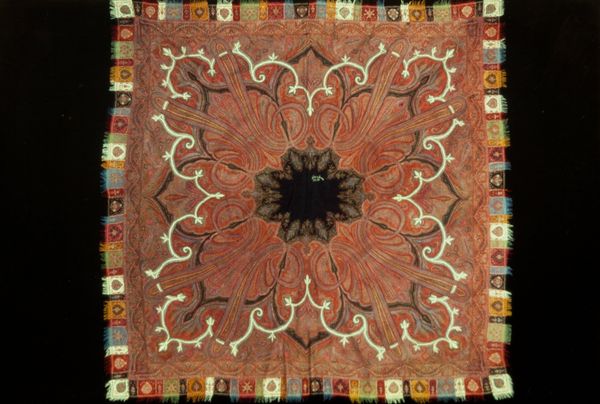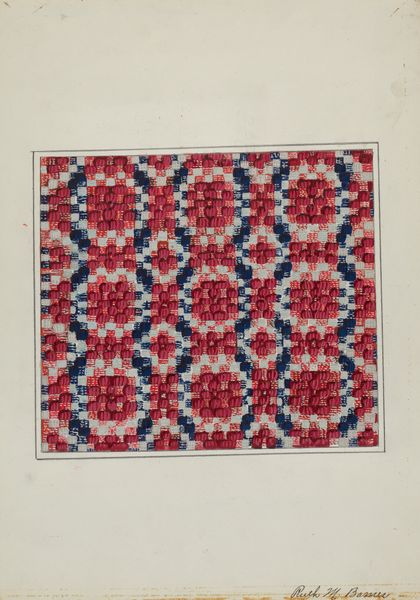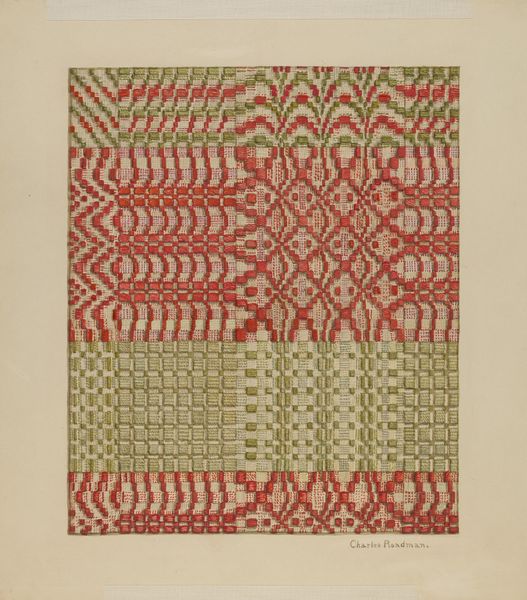
drawing, paper
#
pattern heavy
#
drawing
#
natural stone pattern
#
folk-art
#
paper
#
pattern background
#
repetitive shape and pattern
#
ethnic pattern
#
folk-art
#
geometric
#
repetition of pattern
#
pattern repetition
#
textile design
#
imprinted textile
#
layered pattern
Dimensions: overall: 46.8 x 46.4 cm (18 7/16 x 18 1/4 in.) Original IAD Object: 90" long; 84" wide
Copyright: National Gallery of Art: CC0 1.0
Curator: Here we have Charles Bowman's "Quilt (Star of Bethlehem)," believed to have been created between 1935 and 1942, executed in mixed media. Editor: It's immediately striking – almost dizzying, isn't it? The radiating geometric patterns combined with those delicate floral squares create an intriguing tension. Curator: Exactly. Bowman's artistic process appears to have been meticulous. He married the tradition of quilt-making with the visual arts. Notice the intricate sewing patterns which suggest he wasn’t simply after aesthetics, but a deeply invested crafting of both geometric form and texture. Editor: It's interesting to consider quilting within the context of American folk art. It's so often a communal activity, especially for women, but seeing a male artist engaged… well, how do social norms around textile production influence the way we perceive the piece? Was this work made for a patron or was it part of a bigger quilting circle or a comment on it? Curator: I’d argue there is definitely commentary here on modes of production. Was he pushing back, appropriating? Did he value the artistic labour within his social circle? He's not just making an object, but participating in and possibly reshaping craft traditions and highlighting those often-understated production modes. Editor: It definitely invites those questions. And seeing "Star of Bethlehem" as a theme, in that moment between the world wars and beyond—a hopeful image embedded in a laborious craft feels powerful. How does that cultural expectation impact the appreciation of labor and artistry intertwined within a single object? Curator: In this light, seeing Bowman's intervention – whether through conscious design or an earnest engagement – provides some food for thought around folk art history. Editor: It certainly does. Thanks for lending me a lens into how craft, the artist, and social context intersect with a visually stimulating piece.
Comments
No comments
Be the first to comment and join the conversation on the ultimate creative platform.
